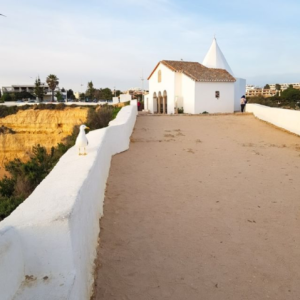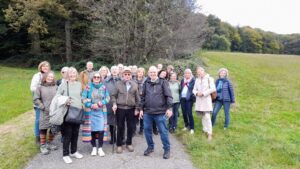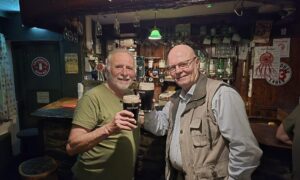My right leg has deteriorated again in the last two days, contrary to my expectations. I can’t see any bruising, the lower leg has become really swollen and the pain is getting stronger, especially after breaks in running. In the morning after getting up I need almost an hour to be able to walk reasonably smoothly. I rack my brains about what the problem might be and doubt my working diagnosis “muscle fibre tear”.
So back to the beginning: What happened, if anything, exactly, what were the first symptoms and findings? I had already considered a thrombosis and a Baker cyst for differential diagnosis, but for psychological reasons I had probably decided on the most harmless variant, muscle fibre rupture, especially as this would hardly affect my Jakobsweg. The more I glimpse, the more I think I felt at the very beginning as if a liquid was running down my calf. Moreover, what I had only thought to be an incipient bruise was strictly speaking nothing more than a large, slight reddening of the right calf, which was relatively sharply defined. Since only the calf is affected, foot and ankle are not swollen, i.e. the venous and lymphatic drainage function, I rule out thrombosis. So the most likely scenario is a burst Baker cyst, which I didn’t know about before. This alternative is rather unpleasant as it could lead to complications such as compartment syndrome, which can also lead to the loss of the lower leg. A Baker cyst can be diagnosed with ultrasound, much better with an MRI, but not when it bursts. At the most, it might be possible to see the remains of the burst cyst during an operative opening. These are all considerations that I don’t like, especially since I am 20 km away from my destination and qualified medical help can only be expected in Santiago University Hospital anyway. On the other hand, one could dare to try to treat the matter conservatively and functionally, i.e. movement and light stress, elevation, cooling. I say “Ultreia” to myself and, as an orthopaedic surgeon and emergency doctor, I decide to take the risk on my own and will walk the last 20 km in a gentle gait, limping, slowly and carefully along the path of St. James.
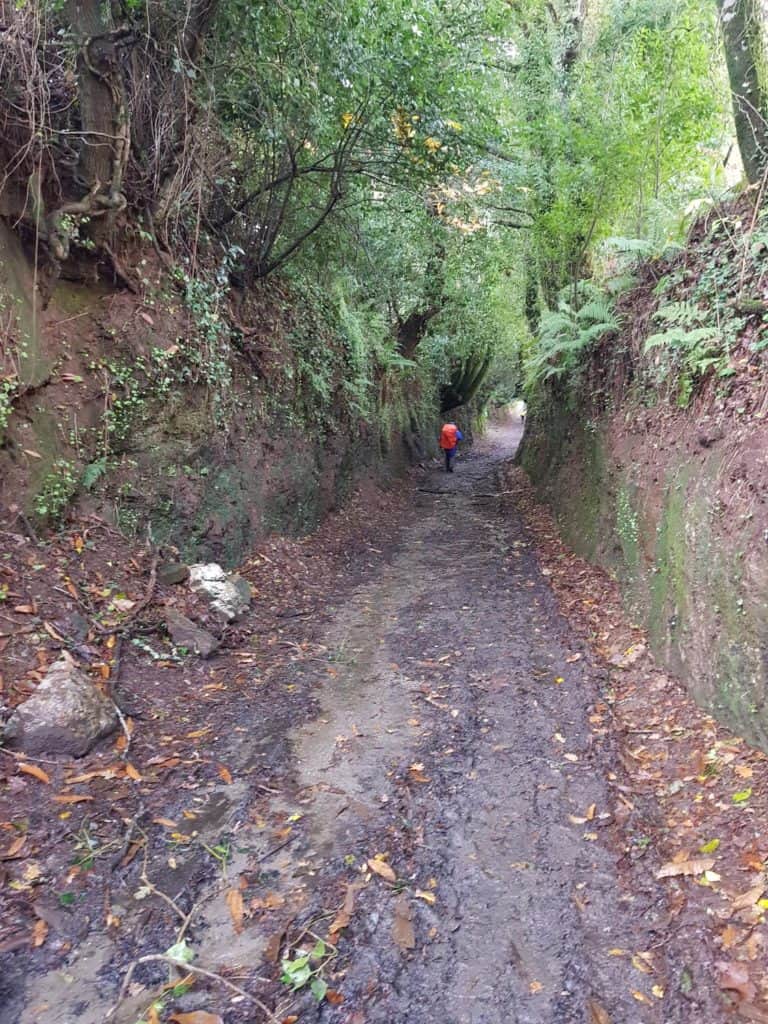
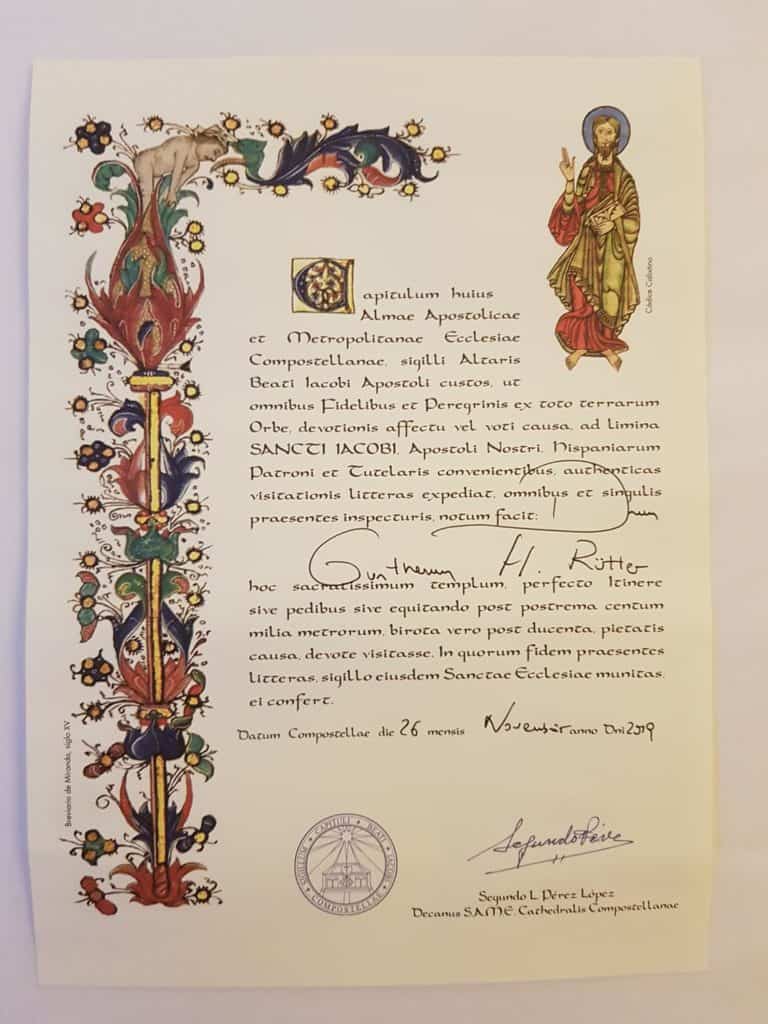
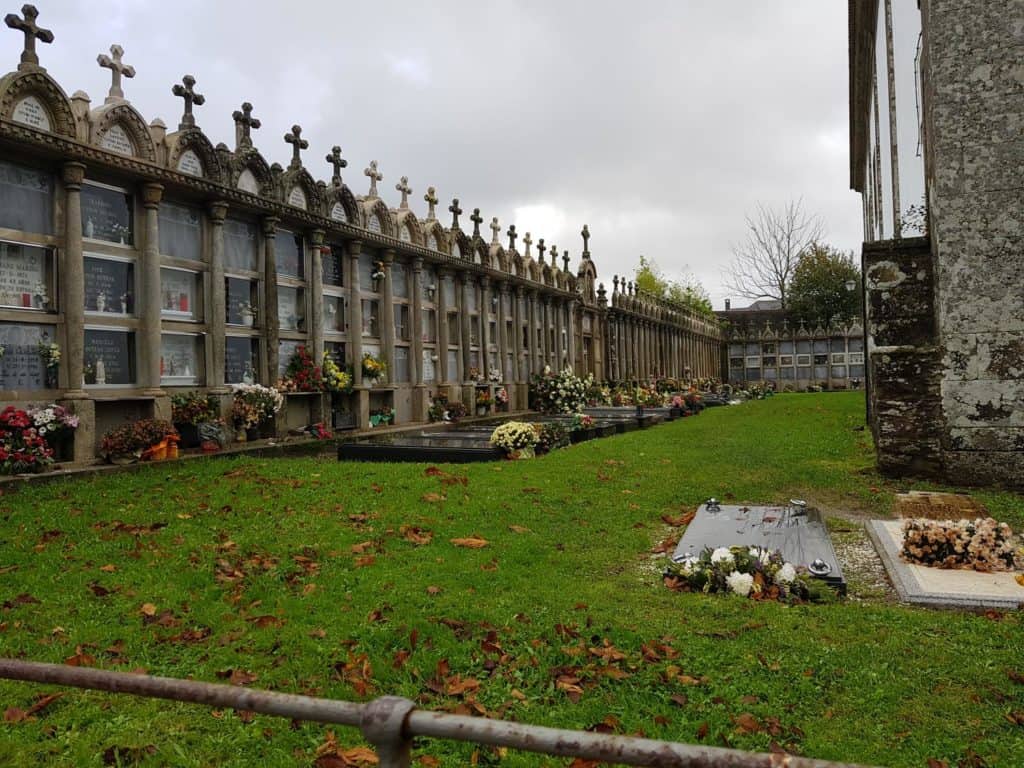
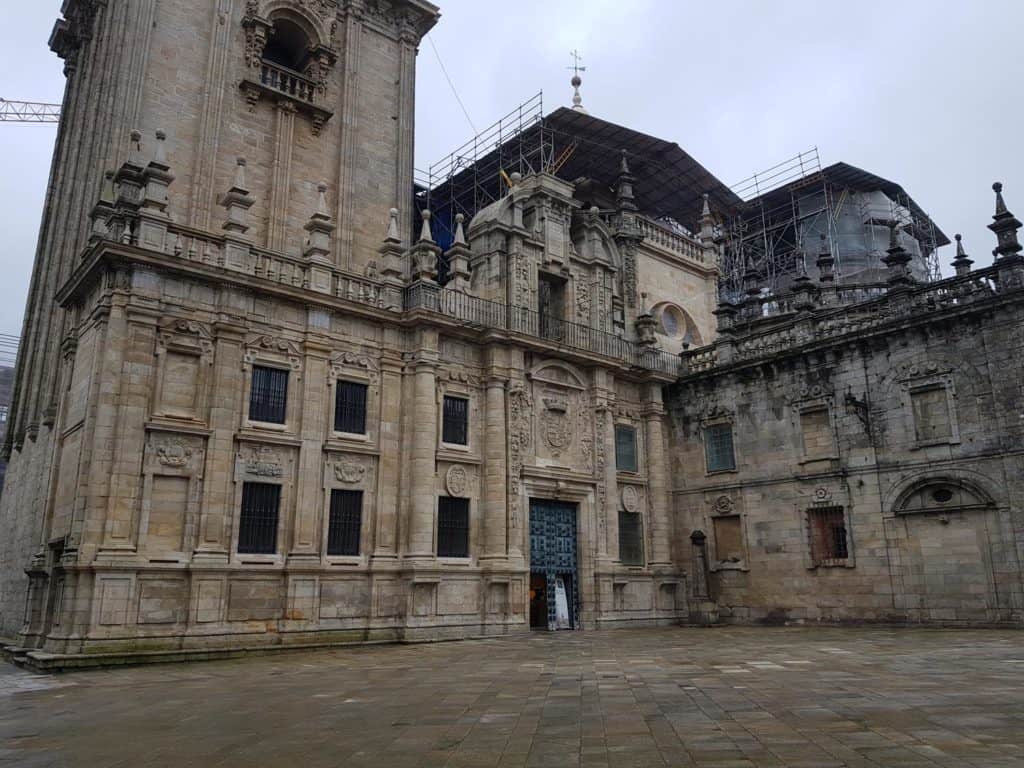
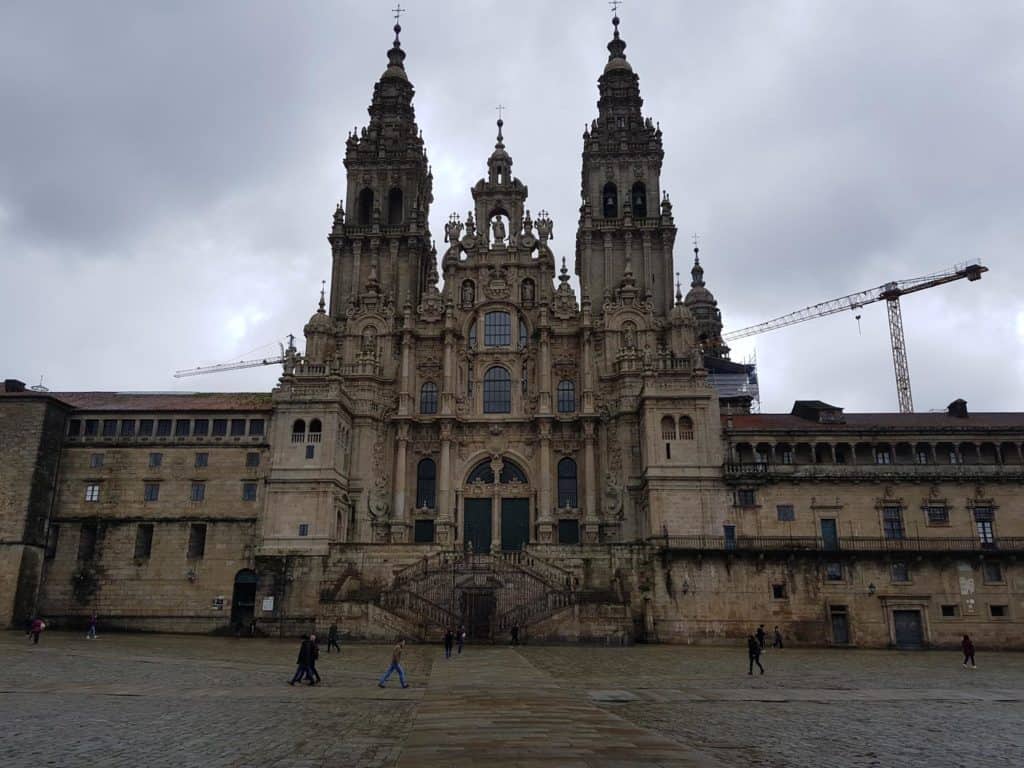

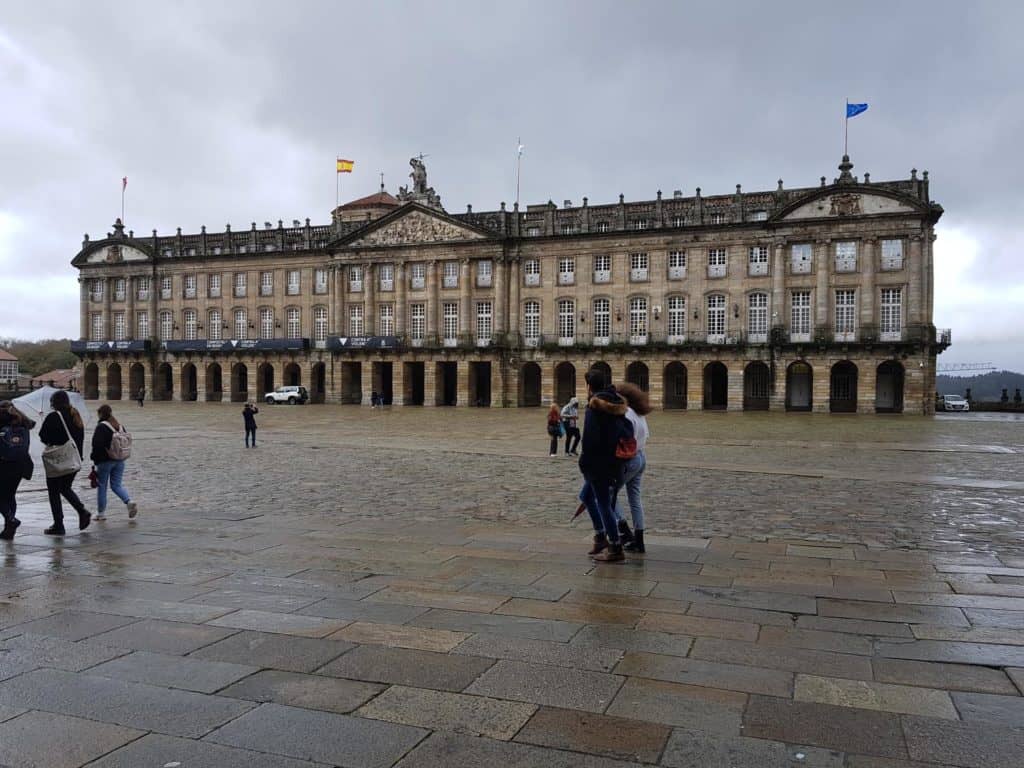
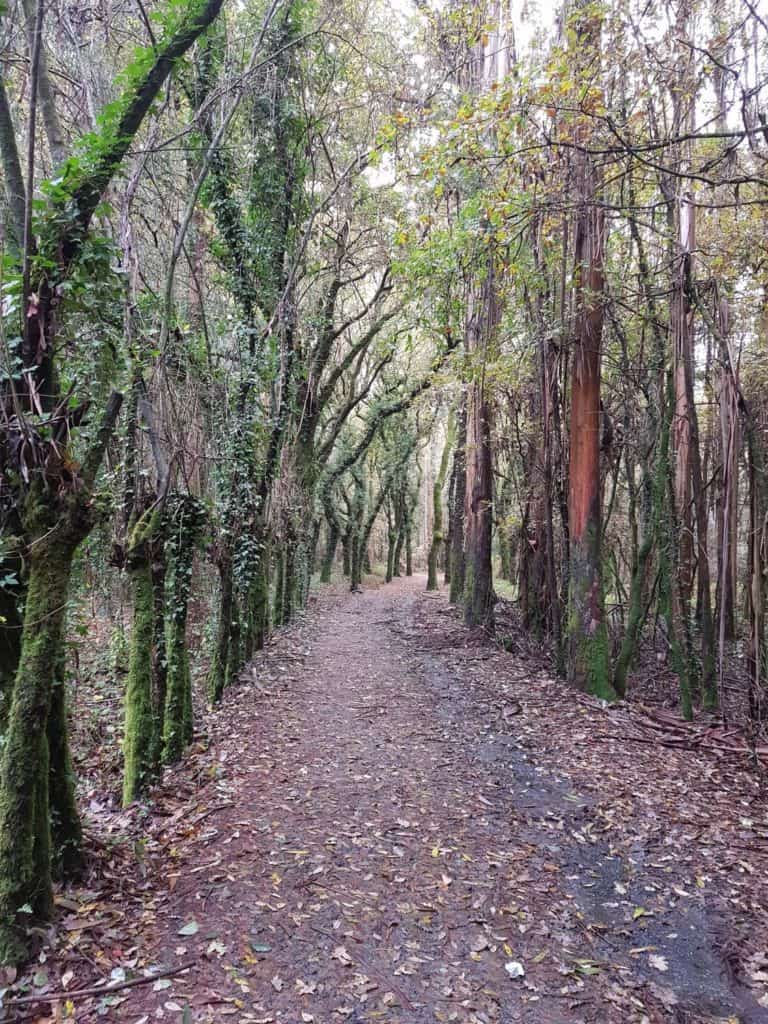
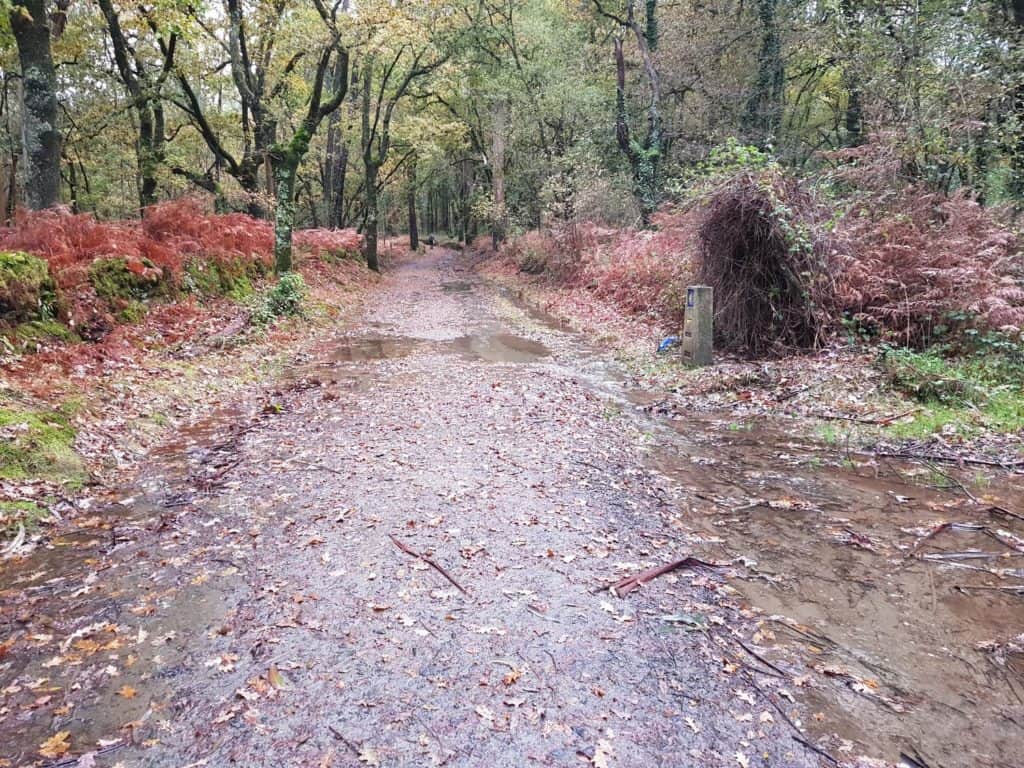
This works quite well, especially since the discomfort decreases while walking and the pressure in the lower leg decreases noticeably due to the muscle activity. Only in the breaks do I have to raise my leg immediately. Lying and running is good, sitting and standing is bad! So I walk through fairytale forests, let myself be overtaken by many pilgrims during my leisurely walk, past Galician tombs and churches. Shortly before Santiago I meet pilgrim bed castles, which are currently empty. In summer all hell must be breaking loose here. At the outskirts of the city there are several such facilities for tens of thousands of pilgrims. One of them I have to document photographically. It storms already the whole day with violent gusts. When I finally reach the city, it starts to rain again for the crowning finale – and it doesn’t stop! I flee to the cathedral, which is currently a huge construction site inside and outside. I am surprised that people are let in at all. But the operation as a bishop’s seat and worldwide one of the most important pilgrim destinations must probably continue. After the security check, where only my backpack is searched, I am let in. I am allowed to take a few photos in the basilica, but not in the crypt where the relics are kept. Then it goes, in the pouring rain and storm gusts, which make umbrellas fold down or fly away to the pilgrims’ office, which is not easy to find during the storm. With a “eureka” moment I stand in front of the entrance. The security man scrutinizes me and leads me to the queue management system, where I get a number and can line up in the corridor in front of the counter hall of the pilgrim’s office. In summer there are over a thousand pilgrims queuing here, says the security man. Today, in the November storm, there are just three people in front of me. Everything has its advantages and disadvantages – I think to myself – and already my number is called. I feel like an applicant in an authority. My documents are checked. I present three almost full pilgrim passes full of stamps and data. Then comes an interview in which I am asked how the way was and when I was where. Finally, I have to fill out a form with my data and answer a few questions in writing.
Then the mine of the counter clerk brightens up and I am congratulated that after fulfilling the criteria I can now call myself a certified pilgrim to St. James and that the Compostela certificate written in Latin is issued in my name as proof of this. In addition, I receive the Certificado de Distancia because I have gone a long way over the required 100 km. But now I have to go to the hotel, have a shower and put my leg up. I am as wet as a cat who fell into the pond. When I have recovered again, after two days I will leave for Fisterra on Cape Finisterre, which was once thought to be the western end of the world (hence the name of Latin finis terrae).


